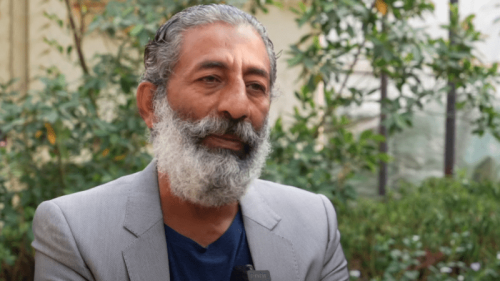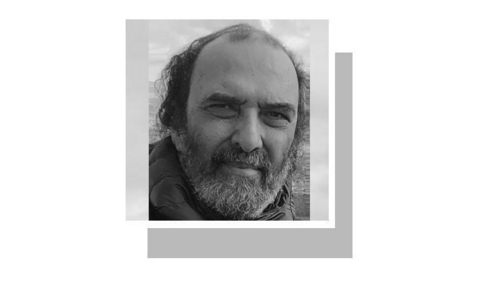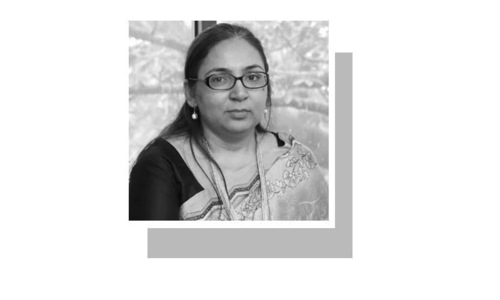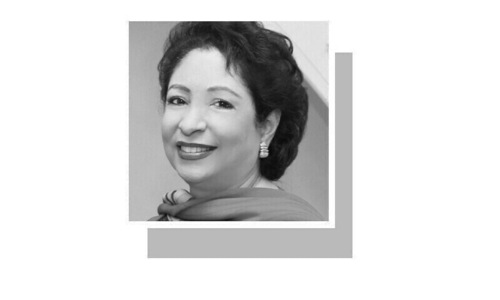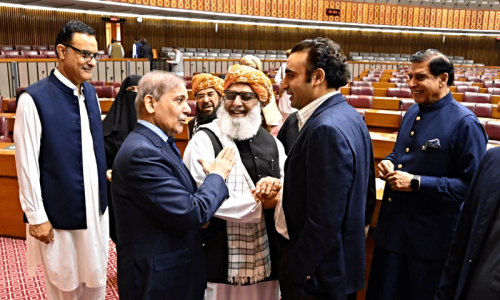
A national headcount on the basis of which resources are distributed and national assembly representation is divided is a political event and a flashpoint because of the issues it brings up. Pakistan has experienced political controversy over every census, and the last one in 1998 saw many communities complaining of deliberate undercounting and political machinations. After much delay, a national census was finally conducted this year, and although final figures will not be available before next March, provisional results have already set the stage for controversy.
The largest complaint is coming from the Muttahida Qaumi Movement (MQM), which had complained of undercounting in Karachi in 1998 as well, and is once again claiming that Karachi’s population count is being tampered with so as to deny the city its due share of resources and representation. While there may realistically be valid undercounting issues, and even some political manoeuvring done to achieve it, part of the reason that not just the MQM, but the wider residents of Karachi feel that the city’s population has been undercounted and that of Lahore has been exaggerated, is because there are gaps in the public’s understanding of the census results and various factor. If considered properly, there portray a far more nuanced picture than that of deliberate undercounting or statistical rigging.
There are three major issues that need to be understood. First, the 1998 census figures for Karachi and Lahore need to be understood properly. Second, the demarcation of urban and rural areas is important and ignored by many who are complaining. Third, there is a major issue with exaggerated estimates clouding judgment about the provisional census results.
The recent census, held after a 19-year gap, may not be as controversial as people are making it out to be. Here’s why...
According to the 1998 census Karachi was the largest city in the country with a population of 9.33 million. Lahore was the second most populous city, with a population of 5.14 million. The 2017 estimates put Karachi at 14.90 million and Lahore at 11.12 million. The provisional census estimates portray the current picture as:

A plain reading would suggest that while Karachi’s population grew by 59.8 percent (in line with the national growth of 57 percent), Lahore’s population grew by a whopping 116 percent, far outpacing general perception. A large discrepancy in this figure can be addressed by the urban-rural demarcation discrepancy.

In 1998, 17.8 percent of Lahore District was considered rural. The reality was that Lahore was an almost completely urban district but old revenue classifications had kept part of the district classified as rural. By 2017, however, the Punjab government had classified the entire Lahore District as an urban one, and subsequently all of the District population was considered as part of Lahore City. If one were to include the rural classified parts of Lahore District in the definition of Lahore City in 1998, then Lahore City grew by 75.3 percent, far less than the skewed 116 percent growth numbers suggested by the plain comparison. That Lahore agglomeration was urbanising fast was no secret but it is demonstrated by the fact that the three other districts in Lahore Division besides Lahore District, i.e. Kasur, Sheikhupura and Nankana Sahib, saw a combined urban annual population growth rate of 2.6 percent between 1998 and 2017, compared to just 1.8 percent annual growth rate for the rural population.
The final census report will shed light on the changing demographics of Karachi itself but estimates suggest that the percentage of the city that reported Urdu as their mother tongue has declined to below 45 percent from 49 percent in 1998, and another estimate suggests that the Urdu-speaking population has perhaps already declined to 36 percent.
To cap off this issue, Lahore City’s growth — according to this more nuanced understanding — still outpaces that of Karachi, and there are a few further factors which make it understandable. Firstly, the level of in-migration to Karachi post-2010 floods has been vastly exaggerated in popular imagination. Secondly, parts of the in-migration from the war-torn regions of the country have concentrated in areas not considered parts of Karachi City for census purposes. Third, native growth rates within the city do not lend themselves to the exaggerated estimates that have been thrown around over time. Let’s take a slightly detailed look at Karachi Division.

Total population growth in Karachi Division between 1998 and 2017 was 62.94 percent, higher than the 59.8 percent growth during the same period for Karachi City, and closer to the growth seen in Lahore. The fastest growth in any sub-entity of Karachi Division was the 7.34 percent annual growth in Karachi West’s rural population, followed by Malir rural’s 5.08 percent growth. These are the only two rural demarcations inside Karachi Division, with a population of over 1.14 million, and are not considered in the population figures for Karachi City, which comprises the urban sections of Karachi Division. This is not a conspiracy hatched at the PBS, but rather an issue of Karachi Division’s vastness which does comprise a significant rural population (as compared to an all urban Lahore District), and also an issue of delayed reclassification, where certain sections of Malir District that ought to be reclassified as urban have not had their status changed since 1998.

Finally, there is the issue of exaggerated figures, official and unofficial, that have circulated over the years and the lack of census helped spread the most over-the-top figures far and wide. One report a decade ago claimed that the city’s population was already 16 million, while more respectable estimates put it at 16 million in 2015. Those two figures are, of course, not reconcilable: the former is a ridiculous overestimation but happens to be the right kind of exaggeration that gains ground amongst the populace because of the element of pride (fifth largest city in the world, etc), while the latter relied on more serious statistical estimations.
A popular figure of 24 million for the city’s population gained ground over the last few years, referenced in many places without a source, but seems to rely on a UN estimate of the urban agglomeration of the city’s population in 2030. The UN estimate of the urban agglomeration — larger than the city itself — was 17.12 million in 2016. Estimates by social scientist Haris Gazdar put the figures for the city’s population at 14.25 million in 2011 and 16.8 million in 2016.

Migrants comprised 23.8 percent of the city in 1998, and even if the figure was static (which it is not), if Karachi were to be a city of 24 million today, the native population of the city would have had to grow at a far higher rate than it actually has been growing at. The largest single ethno-religious group in the city has the lowest growth rate, having grown at perhaps just 2.0 percent during the time between the censuses. Any figure far north of 20 million was an unrealistic, off-the-cuff estimation and most serious estimates of Karachi’s population ranged between 15 and 17 million. Provisional census results show the figure to be within these estimates and are not indicative of any anomaly, let alone manipulation of the head count figures.
The final census report will shed light on the changing demographics of Karachi itself but estimates suggest that the percentage of the city that reported Urdu as their mother tongue has declined to below 45 percent from 49 percent in 1998, and another estimate suggests that the Urdu-speaking population has perhaps already declined to 36 percent. These numbers are in a guaranteed perpetual decline because of lower fertility rates in the Urdu-speaking community, high in-migration of all other ethno-linguistic communities and significant out-migration of the Urdu-speaking community as well. The share of the city’s population that the MQM can consider its vote base, based on its historic ethno-linguistic politics, is shrinking due to demographic factors beyond its control. The party then obviously will agitate to keep numbers adjusted in such a way that it gives it the most political advantage.
When the final census results are announced, census block and census circle level details will allow for better examination of data. Statistical manipulations are easily exposed at such detailed inspection, and parties with criticism of the census should consult statisticians to examine any possible wrongdoings. Hopefully this census will put some amateur estimates, wild exaggerations and ridiculous claims to rest and give us a better estimate of the country’s realities.
The author writes about history and politics
Published in Dawn, EOS, September 10th, 2017
























